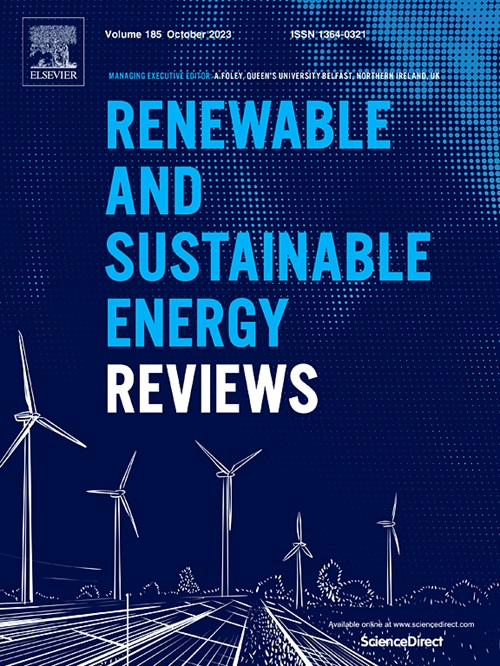Methodologies for offshore wind power plant dynamic stability analysis
IF 16.3
1区 工程技术
Q1 ENERGY & FUELS
引用次数: 0
Abstract
The development of larger Offshore wind power plants (OWPPs) is growing exponentially and also evolving in larger multi-vendor setups, ultimately aiming to constitute offshore Energy hubs. At the same time, interactions among wind turbine converters and power systems have been observed, and this critical phenomenon can significantly impact the dynamic stability of the system. While various stability analysis methods have been proposed to analyze the interactions between OWPPs and the power system at the Point-of-connection (PoC), these stability studies rarely consider the complex offshore transmission system behind the PoC. Typically, the overall OWPP is blamed for the instability issues. However, since the plant itself is a complex system, it is important to understand which part of the OWPP behind the PoC is causing the problem or is likely to become unstable under certain conditions. Therefore, this paper provides a detailed overview of the current system screening indexes and dynamic stability analysis methodologies used in OWPP design. It critically evaluates the advantages and limitations of each approach, emphasizing their applicability to various OWPP structures. The analysis indicates that a combination of time domain and frequency domain methods is necessary to better define stability boundaries and enhance accurate dynamic stability analysis of OWPPs.
求助全文
约1分钟内获得全文
求助全文
来源期刊

Renewable and Sustainable Energy Reviews
工程技术-能源与燃料
CiteScore
31.20
自引率
5.70%
发文量
1055
审稿时长
62 days
期刊介绍:
The mission of Renewable and Sustainable Energy Reviews is to disseminate the most compelling and pertinent critical insights in renewable and sustainable energy, fostering collaboration among the research community, private sector, and policy and decision makers. The journal aims to exchange challenges, solutions, innovative concepts, and technologies, contributing to sustainable development, the transition to a low-carbon future, and the attainment of emissions targets outlined by the United Nations Framework Convention on Climate Change.
Renewable and Sustainable Energy Reviews publishes a diverse range of content, including review papers, original research, case studies, and analyses of new technologies, all featuring a substantial review component such as critique, comparison, or analysis. Introducing a distinctive paper type, Expert Insights, the journal presents commissioned mini-reviews authored by field leaders, addressing topics of significant interest. Case studies undergo consideration only if they showcase the work's applicability to other regions or contribute valuable insights to the broader field of renewable and sustainable energy. Notably, a bibliographic or literature review lacking critical analysis is deemed unsuitable for publication.
 求助内容:
求助内容: 应助结果提醒方式:
应助结果提醒方式:


